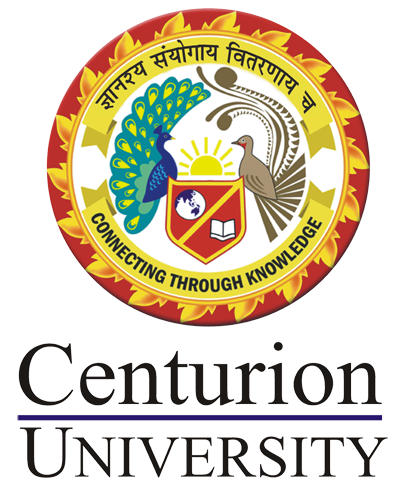Introduction to Computational Biology
Course Attendees
Still no participant
Course Reviews
Still no reviews
Course Name : Introduction to Computational Biology
Code(Credit) : ABC01(3-1-0)
Course Description
Computational Biology is a multidisciplinary approach to applying data-scientific methods, processes, or theories to the study of biological systems. The field includes foundations in Genetics, Genomics, Evolution and related disciplines. The course essentially emphasizes on a variety of bio-computational approaches used to solve modern biological queries. This course comprises of a toolkit of existing software resources built on these computational approaches and that are used by thousands of biologists every day. Therory and Practice components of this course align with the fundamental concepts of computational biology.
Course Objectives
High-throughput technologies produce massive amounts of data, much too large to analyze by hand. The objective of this certificate course is to:
1. Analyze DNA, RNA, and protein sequences using computational tools.
2. Demystify computer science, molecular biology, and some of the ways they intersect.
3. Convert a biological question into a computational problem that can be solved using computational tools.
Learning Outcomes
At the end of this certificate course, learners are expected to learn:
1. About the properties of DNA, RNA, and proteins, the relationships among these molecules, and some biological questions that have puzzled researchers.
2. How to convert a biological question into a computational problem that can be solved using computational tools.
3. How to read and understand solutions to computational problems, which will be formalized as a series of tasks.
4. About general approaches for solving computational problems and learners will be able to apply these approaches to new problems they encounter.
Course Syllabus
Module-I
Data bases in Bioinformatics: Introduction, Biological Databases, Classification format of Biological Database, Biological Database Retrieval System. NCBI: Tools and Databases of NCBI, Database Retrieval Tool, Sequence Submission to NCBI, Basic local alignment search tool (BLAST), Nucleotide Database, Protein Database, Gene Expression Database. EMBL: Introduction, Sequence Retrieval, Sequence Submission to EMBL, Sequence analysis tools. DDBJ: Introduction, Resources at DDBJ, Data Submission at DDBJ. PIR: About PIR, Resources of PIR, Databases of PIR, Data Retrieval inPIR. Swiss-Prot: Introduction and Salient Features.
Practice-I: Data retrieval using GenBank, SRS and DBGET
Practice-II: Sequence similarity using BLAST
Module-II
Sequence Alignments: Introduction, Concept of Alignment, Multiple SequenceAlignment (MSA), MSA byCLUSTALW. Molecular Phylogeny:Methods of Phylogeny, Software for Phylogenetic Analyses, Consistency of Molecular Phylogenetic Prediction.
Practice-III:MSA using Clustal omega
Practice-IV: Phylogenetic analysis using MEGA
Module III
Applications of Bioinformatics: Structural Bioinformatics in Drug Discovery, Quantitative structure-activity relationship (QSAR) techniques in Drug Design, Microbial genome applications, Crop improvement, Bioinformatics in genome sequencing.
Practice-V: Molecular docking
Practice-VI: Gene prediction tools
Text Books:
1. Geoffrey M. Cooper, Robert E. Hausman (Boston University). The Cell: A Molecular Approach. ASM Press, Washington D.C. Fourth edition.
2. Cell and molecular biology Robertis, De and Robertis Lea and Febiger. Eighth Edition.
Reference Books:
1. Molecular Biology of the Cell Alberts, B., et al. 6th Rev ed. Taylor & Francis; 2014 ISBN 978-0-8153-4432-2 (hard), 978-0-8153-4524-4
2. Essential Cell Biology Alberts, B., et al. 4th Rev ed. Garland; 2013 ISBN 9780815344544
3. Lewin’s Genes XII Krebs, J.E. et al. Jones & Bartlett; 2018 ISBN 9781284104493
4. Molecular Cell Biology Lodish H. et al. 8th ed. W.H. Freeman and Company; 2016 ISBN 9781464183393
Session Plan
Session 1
Data bases in Bioinformatics
Session 2
Primary databases-Genomic: NCBI, EMBL, DDBJ
Session 3
Secondary databases- PDB, CSD, MMDB, SCOP, CATH
Session 4
Sequence motif databases- Prosite, ProDom, Pfam, Interpro
Session 5
Genome databases- Viral, Bacterial, organism specific
Session 6
Organism specific databases- OMIM, SGD, TAIR
Session 7
Genome browsers- EnSembl, VEGA, VISTA, UCSE genome
Session 8
Database search engines- Entrez, DBGET
Session 9
File formats- GenBank, Fasta, ALN/ClustalW2
Session 10
Similarity based search engines-BLAST & FASTA
Session 11
Practice-1: Data retrieval using GenBank, SRS and DBGET
Session 12
Practice-2: Sequence similarity using BLAST
Session 13
Assessment-I
Session 14
Sequence similarity-Basic concepts
Session 15
Scoring matrices-PAM, BLOSUM
Session 16
Pairwise alignment-Basic concepts, gap penalties
Session 17
Pairwise algorithm-Needleman & Wunsch, Smith & Waterman
Session 18
Pairwise alignment in nucleic acids and proteins
Session 19
Multiple sequence alignment-Basic concepts
Session 20
MSA- Heirarchial & Progressive approaches
Session 21
MSA algorithm- ClustalW & HMM based
Session 22
Introduction to phylogenetic analysis
Session 23
Methods of phylogeny- Maximum likelihood, Neighbor joining, Maxmum parsimony
Session 24
Practice-3: MSA using Clustal omega
Session 25
Practice-4: Phylogenetic analysis using MEGA
Session 26
Assessment-II
Session 27
Nucleic acid sequence analysis-Reading frames, Transcriptional & Translational signals prediction
Session 28
Splice site identification, Detection of intron-exons, Gene prediction methods
Session 29
RNA fold analysis using MFOLD
Session 30
Protein sequence analysis- Hydropathy plot, pI/Mw detection
Session 31
Transmembrane prediction, protein localization tools
Session 32
Secondary structure prediction tools
Session 33
Structural Bioinformatics in Drug Discovery
Session 34
Quantitative structure-activity relationship (QSAR) techniques in Drug Design
Session 35
Protein Homology modeling
Session 36
Protein Predicted modeling
Session 37
Practice-5: Molecular docking
Session 38
Practice-6: Gene prediction tools
Session 39
Quiz
Our Main Teachers


Dr Rukmini Mishra is presently working as an Assistant Professor (Botany), School of Applied Science, Centurion University of Technology and Management. She has a PhD in Agricultural Biotechnology from ICAR-National Rice Research Institute, India. After PhD, she received the prestigious Young Scientist Award from the Dept. of Science & Technology, SERB, Govt. of India to […]


